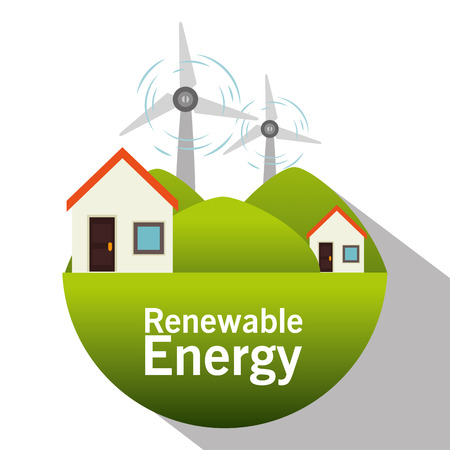1. Introduction: The Power of Collaboration in Insurance
Environmental issues like wildfires, hurricanes, and flooding have become more frequent and severe across the United States. For insurance companies, these challenges are bigger than any single organization can handle alone. That’s why innovative partnerships are taking center stage in the insurance industry. By working together with other insurers, technology firms, government agencies, and non-profits, insurance companies can create meaningful environmental impact while protecting communities.
In the past, insurers mainly focused on individual risk assessment and claims management. Today, the scale of environmental threats demands a new approach—one based on collaboration and shared resources. Partnerships allow insurers to pool data, share expertise, and develop creative solutions that would be impossible to achieve independently.
Why Partnerships Matter for Environmental Challenges
| Key Benefit | Description |
|---|---|
| Shared Data & Insights | Combining resources helps insurers better understand climate risks and predict disasters. |
| Innovative Solutions | Collaborating with tech firms leads to new tools for monitoring and responding to environmental events. |
| Community Impact | Working together enables larger investments in local resilience projects and disaster recovery. |
| Policy Influence | Unified voices make it easier to advocate for sustainable policies at state and federal levels. |
The Shift Toward Teamwork in U.S. Insurance
Across the U.S., insurance companies are forming alliances not just with each other, but also with organizations outside the traditional insurance space. These partnerships range from joint research projects on climate risk modeling to co-funding green infrastructure in vulnerable communities. By joining forces, insurers can amplify their positive influence on both people and the planet.
2. Types of Innovative Partnerships in the American Market
In the United States, insurers are teaming up with a variety of partners to drive environmental change and promote sustainability. These collaborations come in many forms, each bringing unique strengths to address eco-friendly goals. Let’s break down the key models of collaboration that are making a difference in the insurance sector.
Insurer Alliances with Tech Firms
Many American insurers are joining forces with technology companies to harness data analytics, artificial intelligence, and digital platforms. These partnerships help insurers measure risks more accurately and develop products that encourage customers to adopt greener practices. For example, using smart sensors to monitor water usage or detect leaks can reduce claims and protect natural resources at the same time.
Working with Nonprofits
Insurance companies often partner with environmental nonprofits to support community projects, raise awareness, and promote sustainable behaviors. Through these collaborations, insurers can invest in tree planting programs, sponsor clean-up campaigns, or educate policyholders on disaster preparedness. Nonprofits bring local knowledge and credibility, helping insurers reach wider audiences effectively.
Government Agency Collaborations
Public-private partnerships between insurers and government agencies are vital for tackling large-scale challenges like climate resilience and disaster recovery. Together, they design risk-sharing programs, fund research on climate risks, and improve access to affordable insurance for at-risk communities. These efforts ensure that resources are used efficiently and communities are better protected against future events.
Partnering with Reinsurers
Reinsurers play a crucial role by sharing risks and providing expertise on global sustainability issues. American insurers work closely with reinsurers to develop innovative insurance products that cover renewable energy projects or green infrastructure. This collaboration enables both parties to spread risk while supporting investments in environmentally friendly solutions.
Key Models of Collaboration
| Type of Partnership | Main Focus | Example Activities |
|---|---|---|
| Tech Firms | Innovation & Data Analytics | Smart sensors for risk reduction; AI-powered claims processing |
| Nonprofits | Community Engagement & Awareness | Sponsoring eco-projects; educational campaigns |
| Government Agencies | Policy & Disaster Response | Risk-sharing programs; climate research funding |
| Reinsurers | Risk Sharing & Expertise | Sustainable product development; financing green infrastructure |
This diverse network of partnerships shows how American insurers are not just reacting to environmental challenges—they’re actively shaping solutions through creative teamwork.

3. Driving Environmental Stewardship Through Insurance Solutions
How Joint Initiatives are Shaping the Future of Green Insurance
Across the United States, insurers are teaming up with environmental groups, tech companies, and even local governments to create innovative insurance solutions that support environmental stewardship. These partnerships are not just about selling policies—they’re about making a real difference in how businesses and individuals manage their impact on the planet.
Green Insurance Products: Protecting What Matters
Through collaboration, insurers are developing specialized products that address new environmental risks and encourage sustainable choices. For example, some offer coverage for solar panels, electric vehicles, or green buildings. Others provide policies that help companies recover after climate-related disasters while promoting eco-friendly rebuilding practices.
| Insurance Product | Environmental Benefit | Who Benefits? |
|---|---|---|
| Green Property Insurance | Covers energy-efficient upgrades during repairs | Homeowners, Commercial Property Owners |
| EV Auto Policies | Discounts for electric vehicle ownership | Car Owners |
| Sustainable Crop Insurance | Rewards regenerative farming practices | Farmers & Agribusinesses |
| Flood Resilience Coverage | Encourages flood-resistant building techniques | Communities in Flood Zones |
Incentivizing Risk Reduction: Making Sustainability a Smart Choice
Insurers are using incentives like premium discounts or risk assessment tools to motivate policyholders to adopt greener habits. For instance, businesses that implement water-saving technology or wildfire mitigation strategies may qualify for lower rates. These incentives help reduce claims and foster a culture of responsibility.
Popular Incentives Offered by Insurers:
- Premium Discounts: For installing renewable energy systems or using sustainable materials in construction projects.
- Risk Assessments: Free environmental audits for policyholders to identify ways to cut emissions and avoid losses.
- Loyalty Rewards: Programs that recognize long-term clients who consistently make eco-conscious choices.
Promoting Sustainable Business Practices Together
The power of partnership is especially clear when insurers join forces with other organizations. By pooling resources and expertise, they can launch educational campaigns, sponsor sustainability workshops, or co-develop certification programs that set industry standards for green operations. These efforts help businesses of all sizes understand the value of sustainability—not just for the environment, but also for their bottom line.
A Few Examples of Successful Partnerships:
- Public-Private Collaborations: Working with city agencies to insure clean energy projects and improve urban resilience.
- Tech Integrations: Partnering with software firms to monitor carbon footprints and reward emission reductions.
- Nonprofit Alliances: Co-creating community grants for disaster recovery and habitat restoration initiatives.
Together, these innovative partnerships are transforming the insurance landscape—making it easier than ever for Americans to protect their assets while doing good for the planet.
4. Case Studies: Real-World Impact
Collaborative Efforts Making a Difference
Across the United States, insurance companies are teaming up with each other and with outside organizations to make a real difference for the environment. These partnerships show that when insurers work together, they can achieve measurable results that benefit both their customers and the planet.
Notable U.S.-Based Examples
| Partnership | Who’s Involved | Environmental Goal | Real-World Impact |
|---|---|---|---|
| Green Home Rebuild Program | State Farm, The Hartford, Local Construction Firms | Promote eco-friendly home rebuilding after disasters | Thousands of homes rebuilt with sustainable materials and energy-efficient systems |
| Sustainable Mobility Initiative | Liberty Mutual, Lemonade, City Governments | Support electric vehicle (EV) adoption and infrastructure | Increased EV ownership in major cities; new charging stations installed in partnership areas |
| Wildfire Resilience Alliance | Allstate, Travelers, Environmental Nonprofits | Reduce wildfire risk and support community recovery | Community firebreaks created; educational workshops for homeowners in high-risk zones |
| Flood Risk Reduction Project | Chubb, FEMA, Local Watershed Groups | Mitigate flood damage through prevention and education | Improved local drainage systems; policyholder access to flood prevention resources increased by 40% |
How These Partnerships Work Day-to-Day
- Pooled Resources: By combining funding and expertise, insurers can launch larger-scale projects than they could alone.
- Sharing Data: Insurers share risk models and climate data to better predict future environmental challenges.
- Community Engagement: Many partnerships include outreach programs that help people understand risks and take action to protect their homes.
- Innovative Products: Some collaborations have resulted in new insurance products that reward customers for making eco-friendly choices.
The Ripple Effect of Collaboration
The ripple effect from these partnerships extends beyond just financial protection. By working together, insurers help shape safer, greener communities—setting examples for other industries to follow. As these initiatives continue to grow, so does their positive impact on the environment across the country.
5. Looking Ahead: Opportunities and Challenges
Emerging Trends in Insurance-Driven Environmental Impact
As environmental issues take center stage in the U.S., the insurance industry is finding new ways to drive positive change. Innovative partnerships are expected to grow, with insurers teaming up with tech companies, local governments, and environmental nonprofits to create solutions that address climate risk and promote sustainability. Key trends include:
- Green Insurance Products: Policies that reward eco-friendly choices, like discounts for energy-efficient homes or hybrid vehicles.
- Risk Assessment Tech: Using AI and big data to better predict environmental risks, such as wildfires or floods, and help communities prepare.
- Investment in Clean Energy: Insurers are increasingly investing in renewable energy projects, supporting the shift away from fossil fuels.
Regulatory Considerations
The regulatory environment in the U.S. is evolving as both state and federal agencies recognize the importance of climate resilience. Insurers must navigate a complex landscape of rules and reporting requirements related to environmental impact. Some important aspects include:
| Regulatory Focus | Description |
|---|---|
| Climate Risk Disclosure | Regulators may require insurers to report on their exposure to climate-related risks and how they plan to manage them. |
| Sustainable Investment Standards | Laws encouraging (or requiring) insurers to invest in environmentally responsible assets. |
| Collaboration Incentives | Policies that promote public-private partnerships for disaster preparedness or green infrastructure. |
Barriers to Greater Collaboration
While there’s momentum toward more impactful partnerships, several challenges remain:
- Diverse Stakeholder Interests: Aligning goals among insurers, government agencies, and private sector partners can be difficult.
- Lack of Standardization: There’s no single way to measure environmental impact across all projects, making collaboration complicated.
- Regulatory Hurdles: Varying state regulations sometimes slow down cross-border initiatives or new product launches.
- Data Sharing Concerns: Sharing sensitive risk data between organizations raises privacy and competitive concerns.
The Road Forward for U.S. Insurers
The insurance industry has a unique role in championing environmental impact through innovative partnerships. By working together—across industries and with regulators—insurers can help shape a greener future for American communities while managing risk more effectively. The opportunities are significant, but overcoming barriers will require creativity, cooperation, and a clear focus on shared environmental goals.

